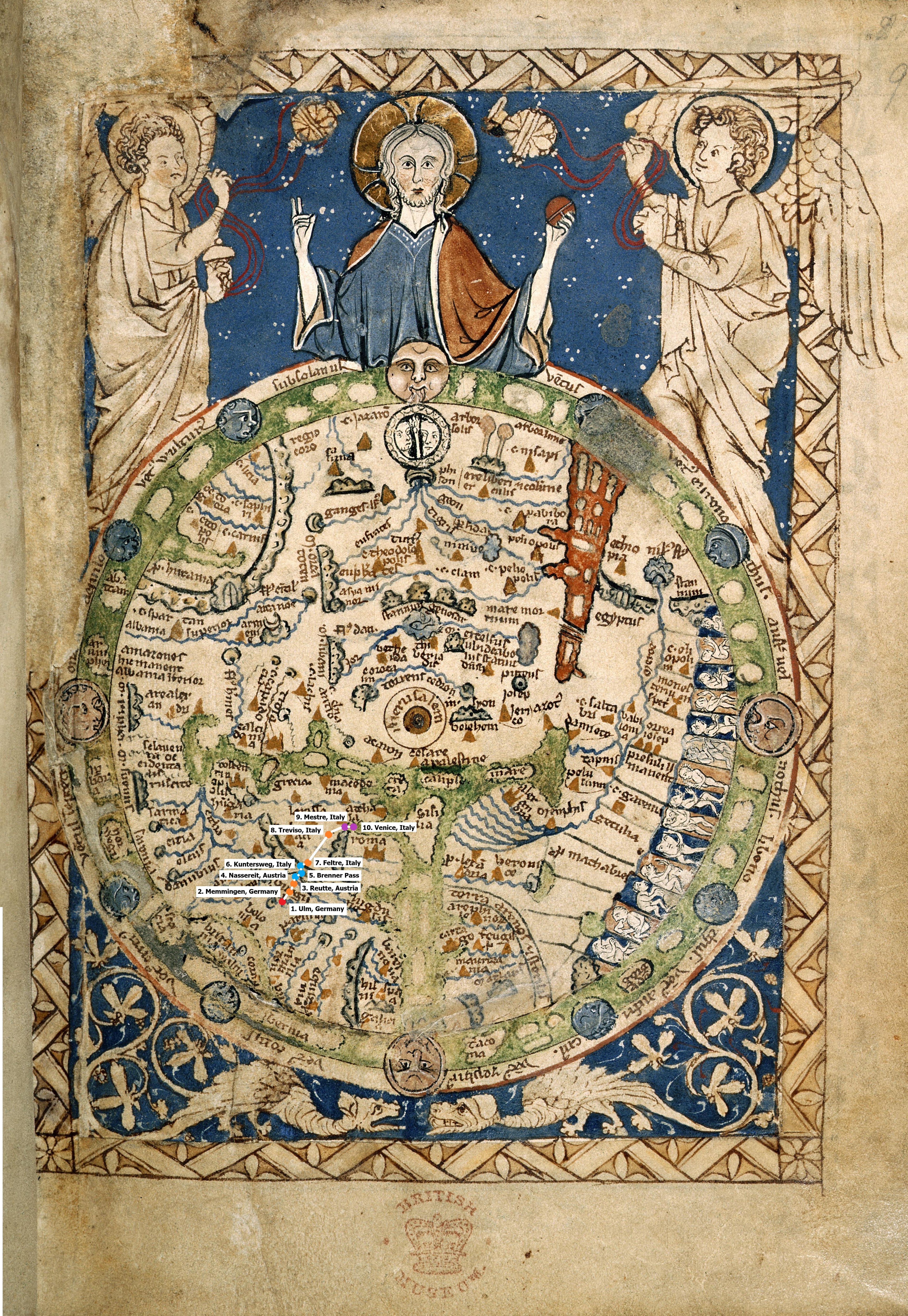In his description of his second pilgrimage to Jerusalem, Felix Fabri focuses primarily on the landscape and its correlation to events detailed in the Holy Bible. Fabri says that he and the other pilgrims on the ship “began to see peaks and mountain-tops rising as it were out of the sea.” He recognizes Mount Carmel, which he associates with the prophet Elisha from the Bible who “prayed to God upon that mountain for rain, when it had not rained for three years and six months and how, while he prayed, there arose a little cloud like the print of a man’s foot from this sea, whence there came forth a great rain, as we read in the Third Book of Kings, chapter 18.” Fabri continues to describe the significance of Mount Carmel to biblical history, and he mentions other important historical landmarks that ultimately relate to the Bible, God, or Jesus Christ. Felix Fabri is clearly writing this narrative for an audience that is interested in understanding the landscape of Jerusalem from a religious perspective. While some Christians from medieval Europe had been exposed to the Bible to some capacity, most had not traveled to the land in which the setting of the New Testament is based. Felix Fabri’s description of the mountainous terrain of Jerusalem does not serve as an illustration of recreational beauty, but rather sacred landmarks that mark the life of Jesus Christ. For Fabri and his audience, landmarks like Mount Carmel and Mount Sinai are demonstrative of the physical paths that Jesus Christ and other saints of the New Testament took during their lifetimes.
Felix Fabri describes a fantastical encounter with abnormal fish: “…the fishes swam on the top of the sea and showed themselves on the surface more than their wont. There we beheld wondrous fishes. Some were large and quite round, like a winnowing-fan. Some had heads like dogs, with long ears hanging down, and we saw many dolphins that morning, and saw them more plainly them ever before.” The fish that “had heads like dogs” were probably from a group whose name is unbeknownst to him or the other European pilgrims. I believe that Felix Fabri included this excerpt about the fish in his narrative because of the importance of fish to the narrative of Jesus Christ. In the Bible, Jesus goes fishing with some of his disciples on several occasions, and he feeds fish to a large group of civilians. Fabri’s encounter with this particular fish probably allowed him to feel a physical connection to Jesus Christ, and he wanted to impart this experience to his audience so they could witness the powerful nature of such a parallel.
Felix Fabri’s subscription to the Christian faith and its values is stark, allowing for very little tolerance or acceptance of ideologies from other faiths. When he and the other pilgrims meet Moorish inhabitants of the land who express their belief in Prophet Muhammad’s divine connection, Fabri calls it a “falsehood,” discrediting the accounts known to those who subscribe to the Islamic faith. Fabri’s tone-deaf response to such an account further proves that he did not take this pilgrimage to learn about other faiths or practices in other parts of the world but to further affirm his own belief and loyalty to Christianity as a minister.
